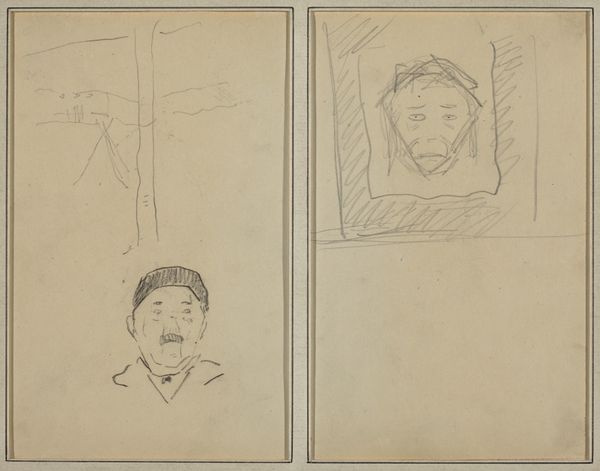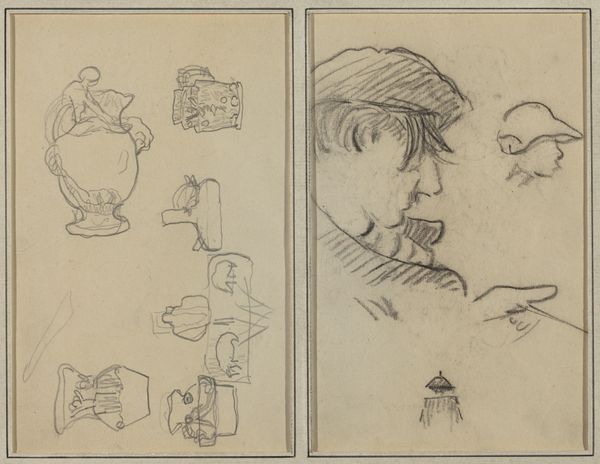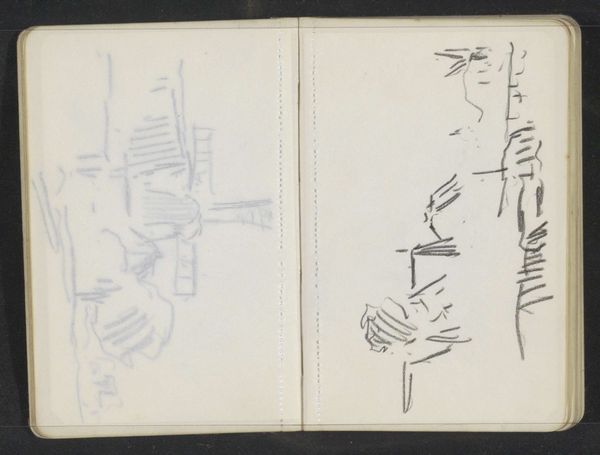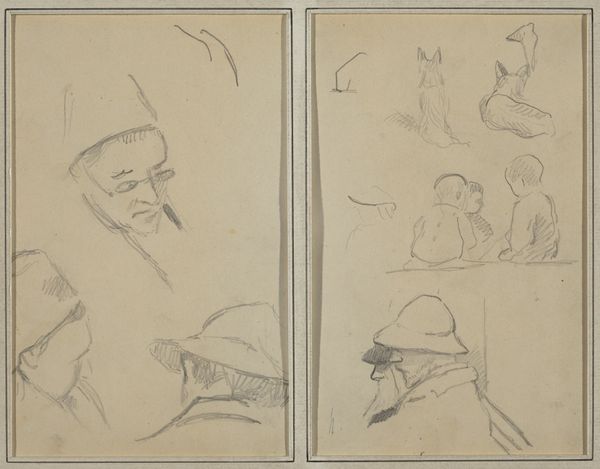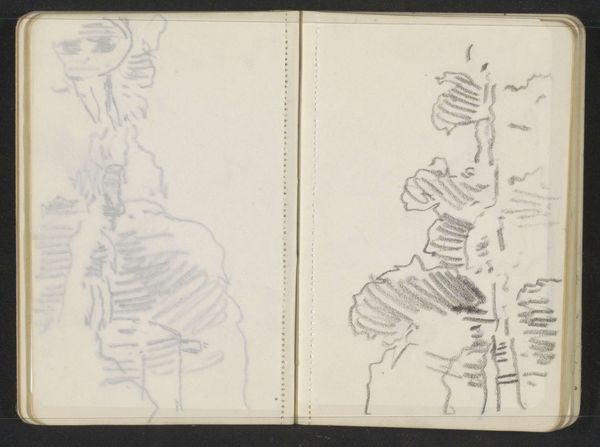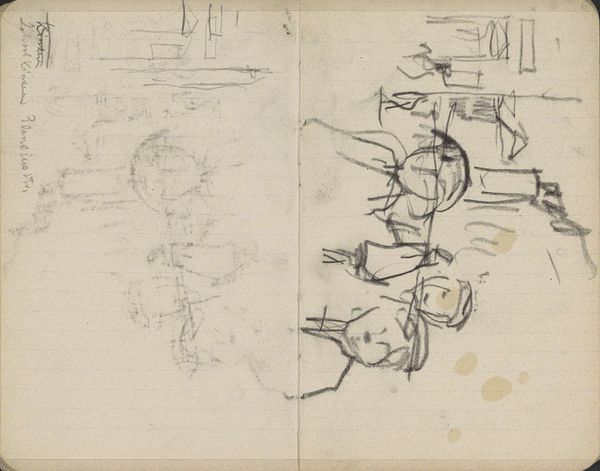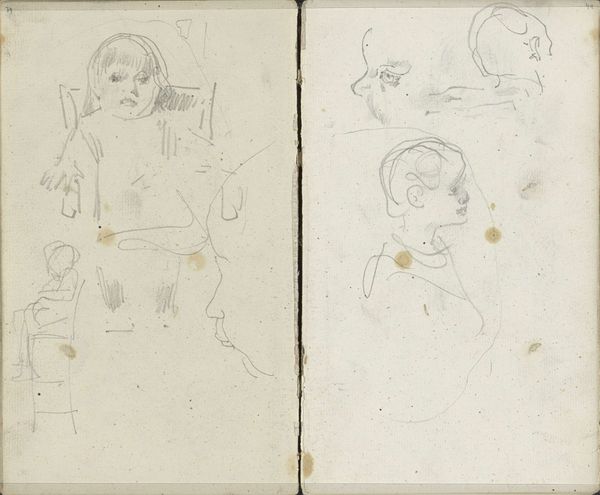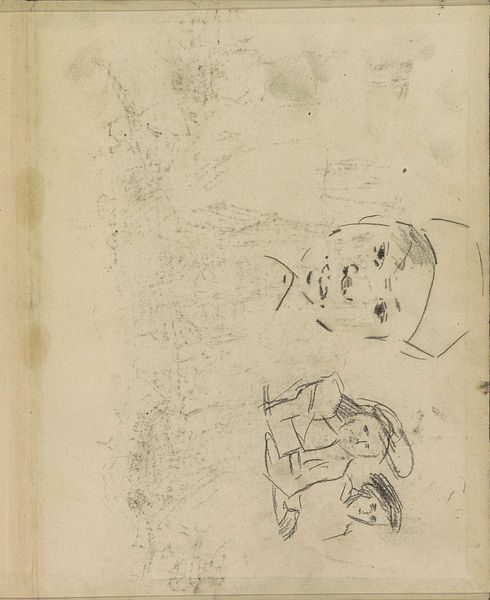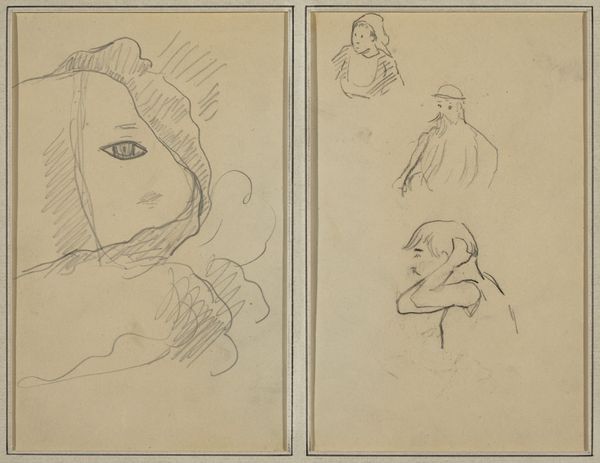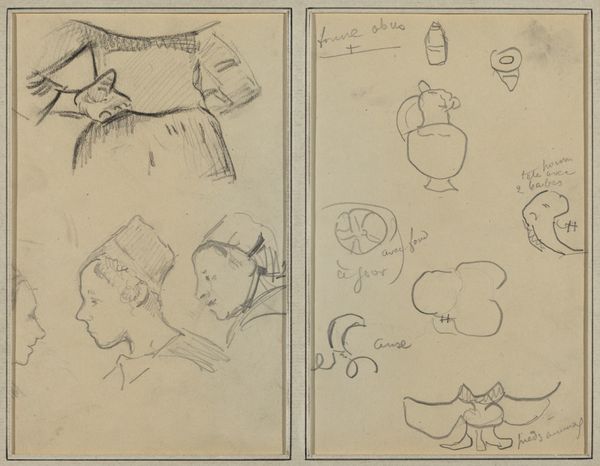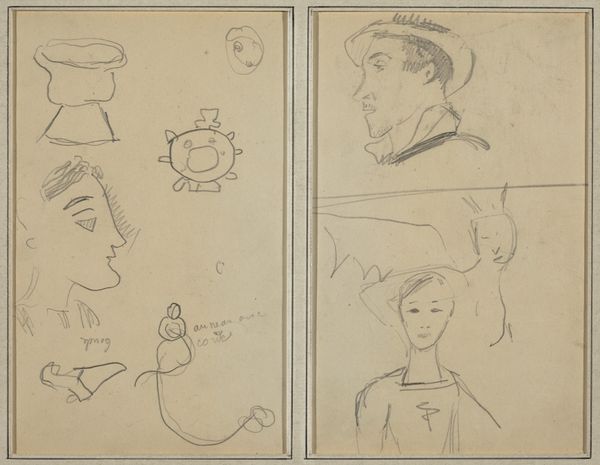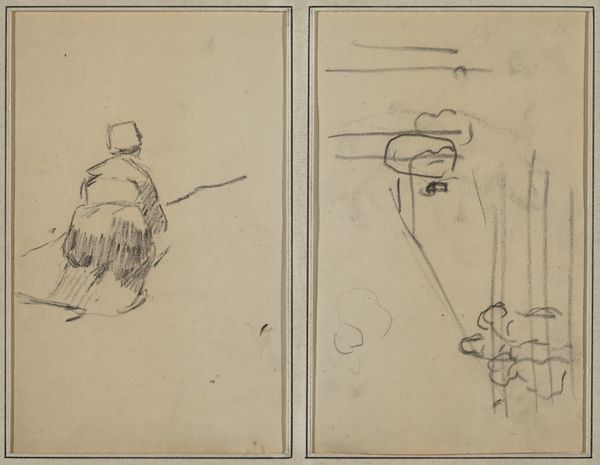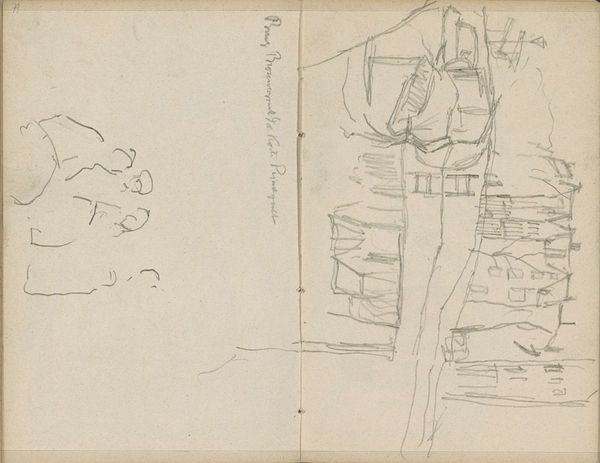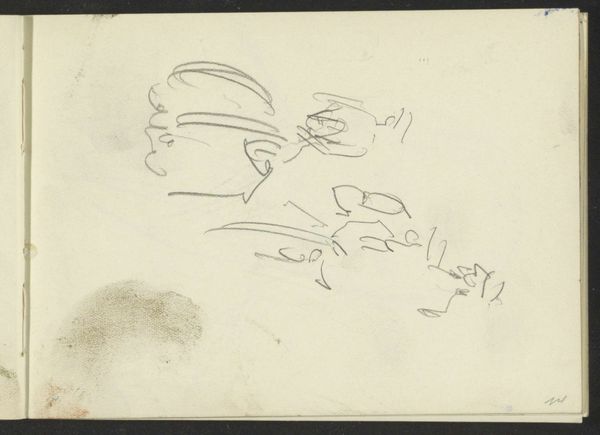![Two Figures and a Bench; Three Studies of Men's Heads and One of a Hand [recto] by Paul Gauguin](/_next/image?url=https%3A%2F%2Fd2w8kbdekdi1gv.cloudfront.net%2FeyJidWNrZXQiOiAiYXJ0ZXJhLWltYWdlcy1idWNrZXQiLCAia2V5IjogImFydHdvcmtzLzNhNWRhYmRkLWYwNGQtNDQ5MC1iNjdkLTE1MDZhNjViMmU1NS8zYTVkYWJkZC1mMDRkLTQ0OTAtYjY3ZC0xNTA2YTY1YjJlNTVfZnVsbC5qcGciLCAiZWRpdHMiOiB7InJlc2l6ZSI6IHsid2lkdGgiOiAxOTIwLCAiaGVpZ2h0IjogMTkyMCwgImZpdCI6ICJpbnNpZGUifX19&w=3840&q=75)
Two Figures and a Bench; Three Studies of Men's Heads and One of a Hand [recto] 1884 - 1888
0:00
0:00
drawing, paper, pencil
#
portrait
#
drawing
#
impressionism
#
landscape
#
figuration
#
paper
#
pencil
#
post-impressionism
Dimensions: overall: 16.9 x 22.4 cm (6 5/8 x 8 13/16 in.)
Copyright: National Gallery of Art: CC0 1.0
Editor: This is a fascinating pencil drawing by Paul Gauguin, "Two Figures and a Bench; Three Studies of Men's Heads and One of a Hand [recto]", created between 1884 and 1888. I'm struck by the sketch-like quality, especially the contrast between the more defined portraits and the almost abstract landscape on the left. What do you see in this work? Curator: Well, I see Gauguin grappling with the visual language of his time. He is positioned between Impressionism and Post-Impressionism, which were movements reacting against academic traditions. The loose rendering suggests Impressionism, but there's also something else happening in his focus on figures removed from high society. Gauguin's fascination with the working class and rural populations started around the mid-1880s. Does that fit with the time frame here, what we understand about how that cultural and social environment fueled his later work in Tahiti? Editor: That makes a lot of sense! So you're suggesting the political and social context of late 19th-century France played a significant role? Curator: Absolutely. You see here on the right an intimate focus on individual studies of common men. These may be character sketches intended to represent a cross section of that society, which ties directly to Gauguin's wider narrative. The Paris Salon, which at that time controlled who gained any notariety, was still dedicated to painting the powerful. Gauguin took it upon himself to depict scenes from modern everyday life, an avant-garde idea in the 1880s. It all relates back to this drive, and even to how his pieces were curated at that time! Editor: It's amazing how a simple drawing can reveal so much about the artist and the world around them. Thanks! Curator: Indeed. It reminds us that every brushstroke carries within it the weight of history and a potential push for changing perception and representation of public life.
Comments
No comments
Be the first to comment and join the conversation on the ultimate creative platform.
